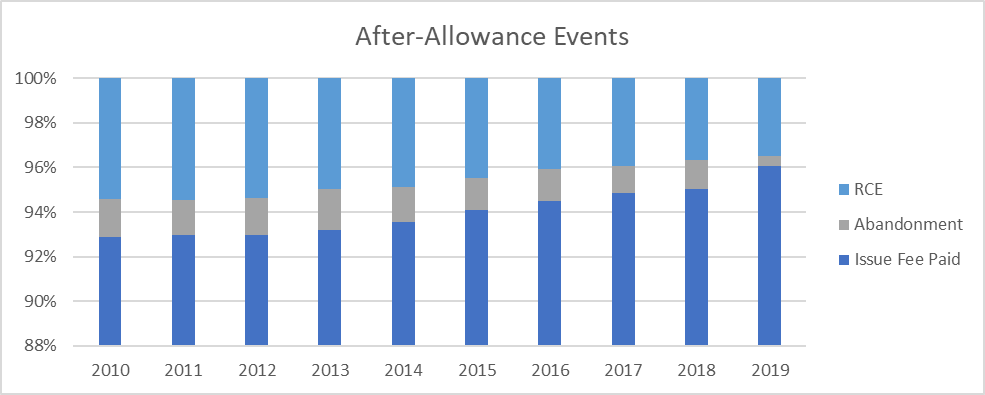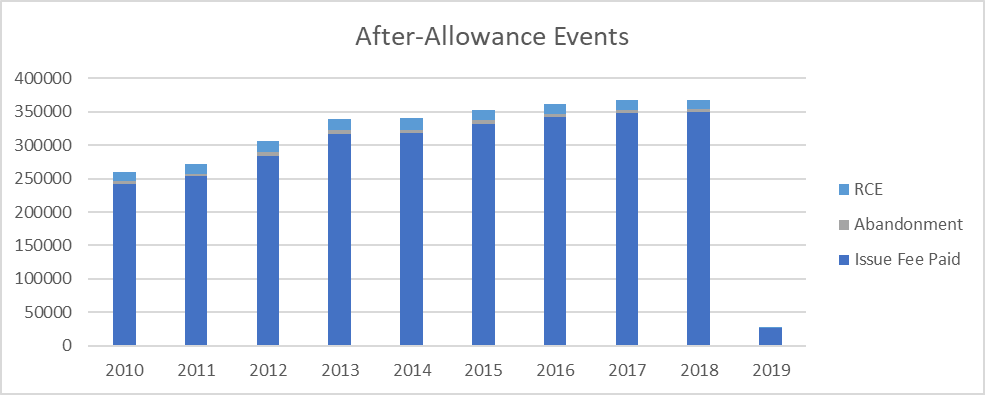A patent application getting allowed does not always mean a patent will result. The most common alternatives, discussed in Lies, Damned Lies, and Examiner Statistics are: (1) letting the application go abandoned instead of paying the issue fee; and (2) having to file an RCE to have an IDS considered.
The “thanks but no thanks” abandonment after allowance
Some inventors reading this who feel like they have gone to war to try and get their application allowed allowed at the PTO may be surprised to know that sometimes applicants choose to let the application go abandoned rather than paying the issue fee (Currently $1000 undiscounted and $500 for small entities). In fact it is quite common (although not as common as expected). As you can see in the charts below, about 1% of allowances — 5280 of them in 2016 — result in an abandonment for failure to pay the issue fee.
The Dreaded RCE+IDS after allowance
First, let me just say that I think the duty of disclosure is nothing but a drain on resources. I can probably count on 1 hand the times an examiner relyied on a piece of art I cited, though that art was almost always way more relevant than whatever art the examiner did rely on. This anecdotal evidence is supported by at least one (albeit aging) study.
That said, we are stuck with the duty of disclosure and one particularly annoying result is the dreaded scenario in which the need to have an IDS considered requires filing an RCE after allowance. Not only does it add delay and, potentially, more rounds of prosecution, but there is also that not-so-insignificant RCE fee.
Often the need for an RCE is just unfortunate timing of an office action in a related application. But sometimes the need for the IDS is because someone simply forgot to file the IDS on time. No one wants to have to make that call to the client. 😬
There is of course also the use of the RCE after allowance to game the system and keep an application pending so that continuations and amendments remain possible (see e.g., The Record for Most RCEs).
Whatever the circumstances behind the need for the RCE, I was curious how often such RCEs are filed. The answer is about 5% — 14704 in 2016 — of allowances are followed by an RCE.
One thing that is interesting about this chart is that the number is shrinking (as a percentage of allowance an in absolute terms). It seems there are two possible explanations: either more people are deciding those references discovered post-allowance are not actually “material” and/or we are getting better at filing our IDSs earlier (possibly better living through technology?). I will try to look into this for a future post.
Here’s what the numbers look like (both relative and absolute) since 2010:



